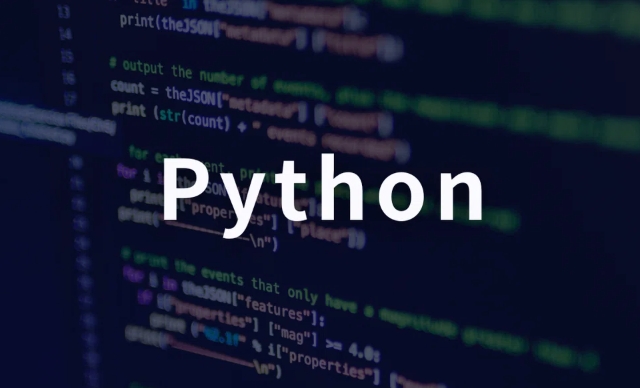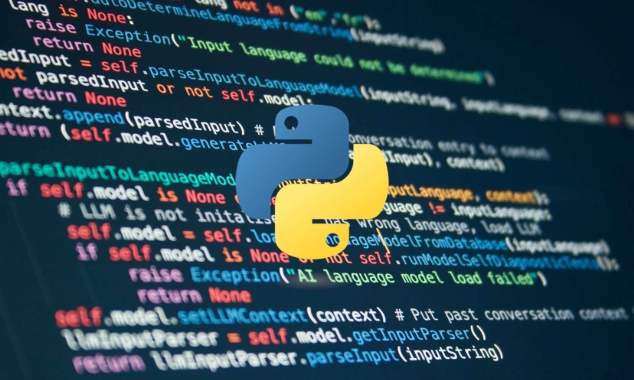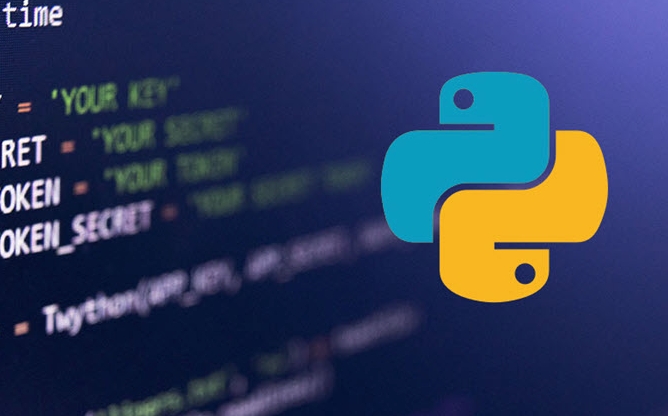Use the Python debugger (pdb) to effectively troubleshoot problems. First, start debugging by inserting the breakpoint() function in the code. When the program runs there, it will automatically pause and enter the interactive debugging environment; secondly, master common commands: 1. n (execute the current line and move to the next line) 2. s (enter the function inside) 3. c (continue to execute until the next breakpoint) 4. l (show the current code context) 5. p variable name (print variable value) 6. pp expression (beautify the output complex data structure) 7. r (run to the current function to return) 8. w (show the call stack) 9. q (exit the debugger); python -m pdb can be used my_script.py starts debugging from the command line and uses the b command to set line or function breakpoints; it is recommended to avoid retaining breakpoint() in production code, and you can set PYTHONBREAKPOINT=0 to disable it, and combine pp locals() to view local variables. It is recommended to use enhancement tools such as ipdb to improve the debugging experience. Although pdb is simple, its functions are reliable and built into Python.

Using the Python debugger (pdb) is a powerful way to step through your code, inspect variables, and understand program flow when things go wrong. Here's how to use it effectively.

Starting pdb
The easiest way to start using pdb is by inserting a breakpoint in your code. In Python 3.7 , you can use the built-in breakpoint() function:
def my_function():
x = 10
y = 20
breakpoint() # Execution will pause here
z = xy
return z
my_function() When the program reaches breakpoint() , it will pause and drop into the interactive debugger.

Note:
breakpoint()is equivalent toimport pdb; pdb.set_trace()but is preferred because it respects environment variables likePYTHONBREAKPOINTand can be disabled globally.
If you're using an older version of Python, use:

import pdb; pdb.set_trace()
Common pdb Commands
Once inside the debugger, you'll see a (Pdb) prompt. Here are the most useful commands:
-
n(next) : Execute the current line and move to the next line in the current function. -
s(step) : Step into a function call. If the current line calls a function,swill enter it. -
c(continue) : Continue execution until a breakpoint is hit or the program ends. -
l(list) : Show the current code around the current line. -
p variable_name(print) : Print the value of a variable. For example:px. -
pp expression: Pretty-print the result of an expression (useful for dicts, lists). -
r(return) : Continue execution until the current function returns. -
w(where) : Show the current stack trace (where you are in the call stack). -
q(quit) : Exit the debugger and stop the program.
Example:
def add(a, b):
return ab
def main():
x = 5
y = 10
breakpoint()
result = add(x, y)
print(result)
main()At the breakpoint, you can:
(Pdb) px 5 (Pdb) py 10 (Pdb) s --Call-- > <stdin>(1)add()
You stepped into the add function.
Using pdb from the Command Line
You can also run a script under pdb directly from the terminal:
python -m pdb my_script.py
This starts the debugger before running the script. Use c to run until the first breakpoint or l to list code.
When launched this way, execution doesn't stop until it hits a breakpoint() or you use the b (break) command to set breakpoints.
Setting Breakpoints in Code
You can set breakpoints at specific lines or functions:
import pdb pdb.set_trace() # Break here
Or set conditional breakpoints:
if some_condition:
import pdb; pdb.set_trace() You can also use the b command in the debugger to set future breakpoints:
-
b 10– set a breakpoint at line 10 -
b my_function– set a breakpoint at the start ofmy_function -
b myfile.py:20– set a breakpoint in another file
Tips and Best Practices
- Use
pp locals()to see all local variables in a readable format. - Avoid leaving
breakpoint()calls in production code. You can disable them withPYTHONBREAKPOINT=0:PYTHONBREAKPOINT=0 python my_script.py
- Combine
pdbwith logging for non-interactive debugging. - Consider using enhanced debuggers like
ipdb(with IPython) for better syntax highlighting and tab completion.
Basically, pdb gives you control to pause, inspect, and step through your code. It's not flashy, but it's reliable and built into Python.
The above is the detailed content of How to use the Python debugger (pdb)?. For more information, please follow other related articles on the PHP Chinese website!

Hot AI Tools

Undress AI Tool
Undress images for free

Undresser.AI Undress
AI-powered app for creating realistic nude photos

AI Clothes Remover
Online AI tool for removing clothes from photos.

Clothoff.io
AI clothes remover

Video Face Swap
Swap faces in any video effortlessly with our completely free AI face swap tool!

Hot Article

Hot Tools

Notepad++7.3.1
Easy-to-use and free code editor

SublimeText3 Chinese version
Chinese version, very easy to use

Zend Studio 13.0.1
Powerful PHP integrated development environment

Dreamweaver CS6
Visual web development tools

SublimeText3 Mac version
God-level code editing software (SublimeText3)
 Polymorphism in python classes
Jul 05, 2025 am 02:58 AM
Polymorphism in python classes
Jul 05, 2025 am 02:58 AM
Polymorphism is a core concept in Python object-oriented programming, referring to "one interface, multiple implementations", allowing for unified processing of different types of objects. 1. Polymorphism is implemented through method rewriting. Subclasses can redefine parent class methods. For example, the spoke() method of Animal class has different implementations in Dog and Cat subclasses. 2. The practical uses of polymorphism include simplifying the code structure and enhancing scalability, such as calling the draw() method uniformly in the graphical drawing program, or handling the common behavior of different characters in game development. 3. Python implementation polymorphism needs to satisfy: the parent class defines a method, and the child class overrides the method, but does not require inheritance of the same parent class. As long as the object implements the same method, this is called the "duck type". 4. Things to note include the maintenance
 Explain Python generators and iterators.
Jul 05, 2025 am 02:55 AM
Explain Python generators and iterators.
Jul 05, 2025 am 02:55 AM
Iterators are objects that implement __iter__() and __next__() methods. The generator is a simplified version of iterators, which automatically implement these methods through the yield keyword. 1. The iterator returns an element every time he calls next() and throws a StopIteration exception when there are no more elements. 2. The generator uses function definition to generate data on demand, saving memory and supporting infinite sequences. 3. Use iterators when processing existing sets, use a generator when dynamically generating big data or lazy evaluation, such as loading line by line when reading large files. Note: Iterable objects such as lists are not iterators. They need to be recreated after the iterator reaches its end, and the generator can only traverse it once.
 How to handle API authentication in Python
Jul 13, 2025 am 02:22 AM
How to handle API authentication in Python
Jul 13, 2025 am 02:22 AM
The key to dealing with API authentication is to understand and use the authentication method correctly. 1. APIKey is the simplest authentication method, usually placed in the request header or URL parameters; 2. BasicAuth uses username and password for Base64 encoding transmission, which is suitable for internal systems; 3. OAuth2 needs to obtain the token first through client_id and client_secret, and then bring the BearerToken in the request header; 4. In order to deal with the token expiration, the token management class can be encapsulated and automatically refreshed the token; in short, selecting the appropriate method according to the document and safely storing the key information is the key.
 Explain Python assertions.
Jul 07, 2025 am 12:14 AM
Explain Python assertions.
Jul 07, 2025 am 12:14 AM
Assert is an assertion tool used in Python for debugging, and throws an AssertionError when the condition is not met. Its syntax is assert condition plus optional error information, which is suitable for internal logic verification such as parameter checking, status confirmation, etc., but cannot be used for security or user input checking, and should be used in conjunction with clear prompt information. It is only available for auxiliary debugging in the development stage rather than substituting exception handling.
 How to iterate over two lists at once Python
Jul 09, 2025 am 01:13 AM
How to iterate over two lists at once Python
Jul 09, 2025 am 01:13 AM
A common method to traverse two lists simultaneously in Python is to use the zip() function, which will pair multiple lists in order and be the shortest; if the list length is inconsistent, you can use itertools.zip_longest() to be the longest and fill in the missing values; combined with enumerate(), you can get the index at the same time. 1.zip() is concise and practical, suitable for paired data iteration; 2.zip_longest() can fill in the default value when dealing with inconsistent lengths; 3.enumerate(zip()) can obtain indexes during traversal, meeting the needs of a variety of complex scenarios.
 What are python iterators?
Jul 08, 2025 am 02:56 AM
What are python iterators?
Jul 08, 2025 am 02:56 AM
InPython,iteratorsareobjectsthatallowloopingthroughcollectionsbyimplementing__iter__()and__next__().1)Iteratorsworkviatheiteratorprotocol,using__iter__()toreturntheiteratorand__next__()toretrievethenextitemuntilStopIterationisraised.2)Aniterable(like
 What are Python type hints?
Jul 07, 2025 am 02:55 AM
What are Python type hints?
Jul 07, 2025 am 02:55 AM
TypehintsinPythonsolvetheproblemofambiguityandpotentialbugsindynamicallytypedcodebyallowingdeveloperstospecifyexpectedtypes.Theyenhancereadability,enableearlybugdetection,andimprovetoolingsupport.Typehintsareaddedusingacolon(:)forvariablesandparamete
 Python FastAPI tutorial
Jul 12, 2025 am 02:42 AM
Python FastAPI tutorial
Jul 12, 2025 am 02:42 AM
To create modern and efficient APIs using Python, FastAPI is recommended; it is based on standard Python type prompts and can automatically generate documents, with excellent performance. After installing FastAPI and ASGI server uvicorn, you can write interface code. By defining routes, writing processing functions, and returning data, APIs can be quickly built. FastAPI supports a variety of HTTP methods and provides automatically generated SwaggerUI and ReDoc documentation systems. URL parameters can be captured through path definition, while query parameters can be implemented by setting default values ??for function parameters. The rational use of Pydantic models can help improve development efficiency and accuracy.






